Mountain Bike Protective Gear: Pads, Body Armor, & More
Learn about the best mountain bike protective gear to keep you safe out on the trails including helmets, knee pads, elbow pads, and more.
Let’s face it, mountain biking isn’t the most gentle of sports. Regardless of how long you’ve been doing it or what type of mountain biking you enjoy, the risk of getting hurt or injured is there. It’s simply par for the course.
The good news, though, is that there is mountain bike protective gear we can use to minimize harm or even prevent injury from happening should we find ourselves sailing over the handlebars.
Mountain bike safety gear has come a long way over the past few decades and it’s safe to say that wearing protection (especially a helmet!) has saved countless trips to the ER and even saved lives.
But what mtb protective gear do you need? In this post, I outline the different types of protective gear and give some tips on when you should consider wearing some extra padding.
Let’s dive in!
When to wear mountain bike protective Gear
The answer to this question is always. You should always wear a helmet, which is the most vital piece of mtb protective gear. Please do not ride without wearing a helmet. Seriously. Thank you.
Helmet aside, protective gear is a personal preference and personal choice. Below are a few instances that I think warrant some extra pieces of padding:
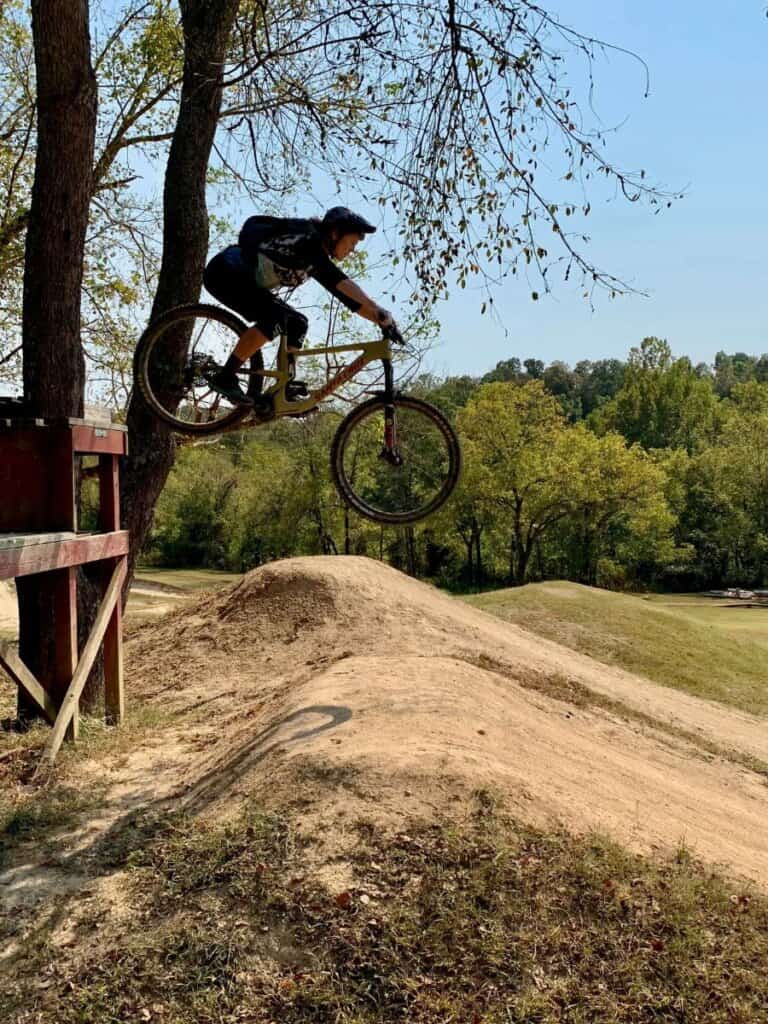
Protecting your head, Neck, & face
Your head is the most important part of your body to protect, so never ride without a helmet, ok??? This section goes over different types of helmets as well as other ways to protect your neck and face.
A Helmet
I already mentioned the importance of wearing a helmet every time you ride, so I won’t belabor the point. But if it’s time for a new helmet (i.e. you’ve had a bad crash or it’s been several years since you’ve purchased a new one), you have three options:
- A half-lid helmet: basically a ‘normal’ helmet
- A full-face helmet: one that has a chin guard for more protection around the face
- A breakaway helmet: these can be used as a ‘normal’ helmet or as a full-face helmet by attaching a removable chin bar
Whichever option you choose, make sure it has MIPS technology or another technology that helps protect against rotational forces during a crash.
Half-lid Helmet
For most rides, you’ll want a half-lid or ‘normal’ helmet. These are great for everyday rides that don’t involve a lot of technical terrain or big features.
Two wheeled wanderer pick
Giro Manifest
I’ve been wearing the Giro Manifest helmet for several seasons now and I really love it. It’s comfortable, has great ventilation, and most importantly, it’s safe thanks to the MIPS technology. Check out my full review of the Giro Manifest.
>> Where to Shop:
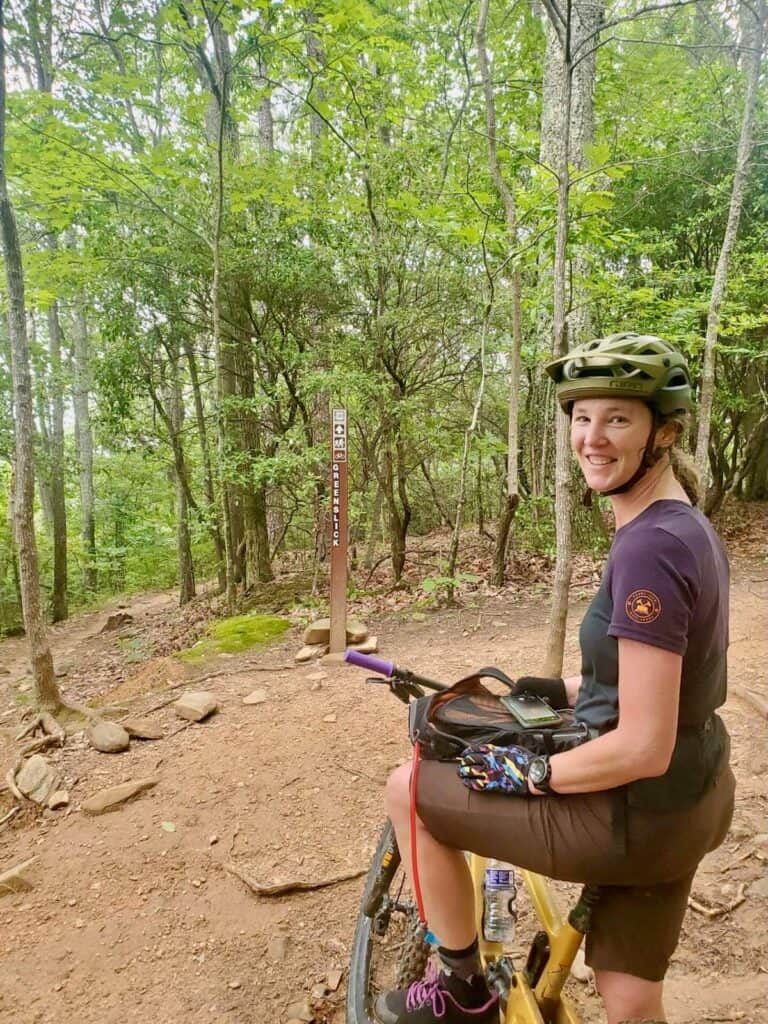
Looking for a more budget-friendly option? Check out the Giro Source.
Full-face helmet
If you plan on doing bike park riding or you simply want maximum protection on the trail, a full-face helmet will be your friend.
These are engineered to protect all angles of your head as well as the front side of your face including your pearly whites.
The downside to full-face helmets is that they can be hot and heavy, so you probably won’t want to be pedaling in one too much.
>> Where to Shop:
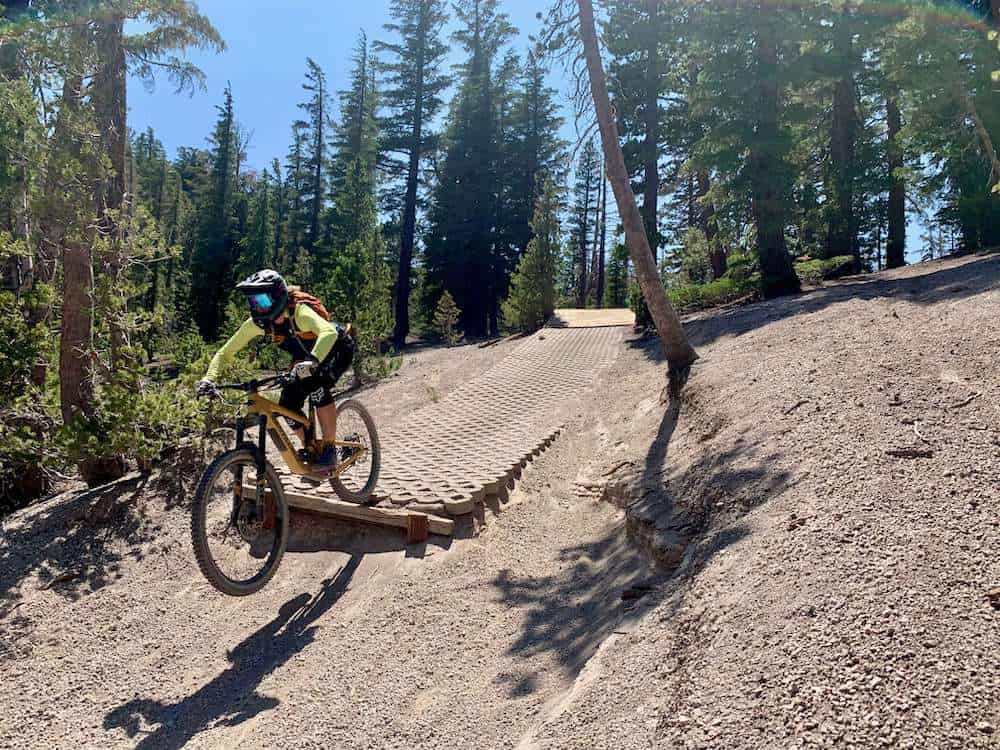
Breakaway helmet
Breakaway helmets provide the best of both worlds: you can use them as a ‘normal’ half lid helmet for your everyday cross-countryesque rides and then you can strap on the chin bar to make it a full-face for bike park terrain or rowdier trails.
They are essentially two helmets in one.
Two wheeled wanderer pick
Bell Super DH
That Bell Super DH is a breakaway helmet, which means it has a removable chin bar. I used this helmet for many seasons before switching to a non-breakaway full face. If you only want one helmet for everything, though, this is a great choice. Read my full review here.
>> Where to Shop:
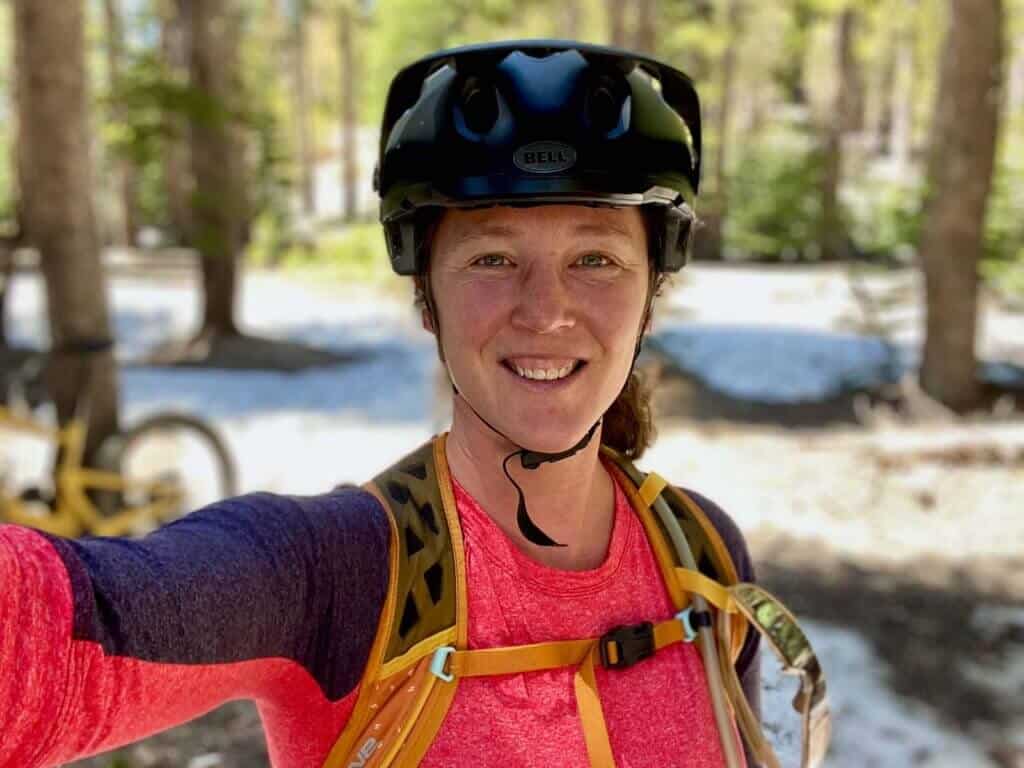
Read next: Looking for more options? Check out my post on the Best Mountain Bike Helmets.
Glasses or Goggles
To protect your eyes from dirt, dust, or other flying objects, it’s a good idea to wear eye protection when you’re riding.
You have two options: sunglasses or goggles.
Any pair of sunglasses will work fine at first as long as they’re polarized and easy to see in both full sun and shaded trail settings.
Two wheeled wanderer pick
Smith Shift Split MAG
The Smith Shift MAG sunglasses are designed for days out on the trail. You can opt for a photochromatic lens that lightens and darkens based on conditions or a chromopop lens for specific conditions. You can also easily swap lenses thanks to the magnetic lens lock.
>> Where to Shop:
If you’re at the bike park and wearing a full-face helmet, many riders opt to wear goggles because there’s less risk of them slipping or falling off when on rowdier terrain.
They also prevent dirt, dust, and mud from flying into your eyes, which could be no bueno on a rowdy trail.
Plus, goggles paired with a full face make you look like a badass.
>> Where to Shop:
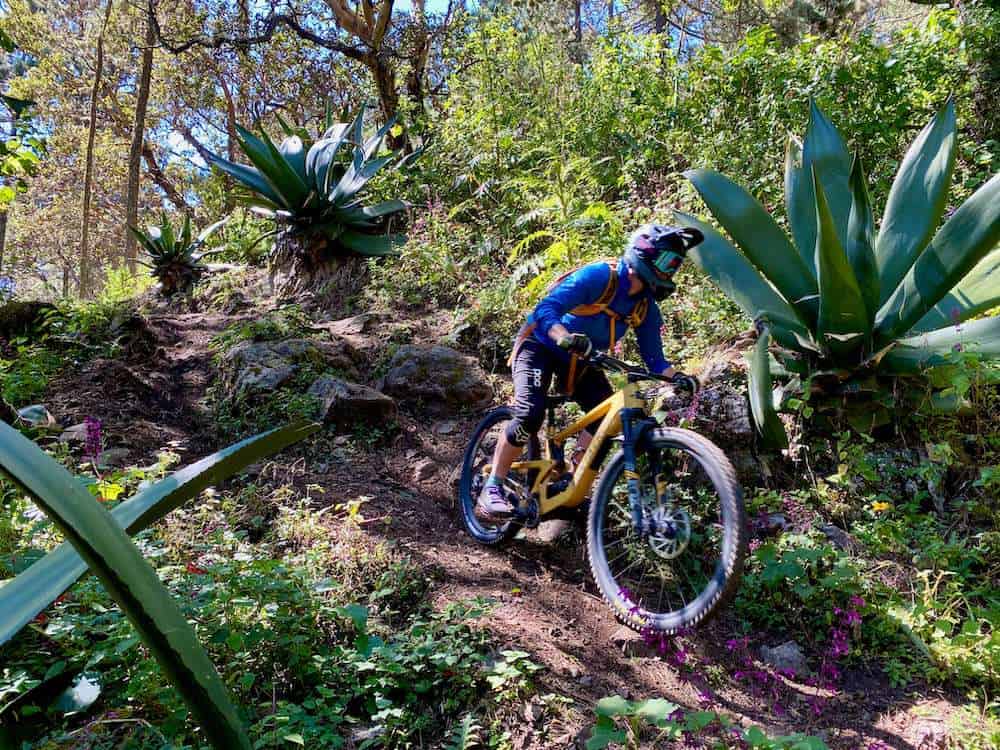
Neck brace
Mountain bikers who do a lot of jumping and high-speed/high-stakes riding will typically wear a neck brace to protect them from whiplash or – worst-case scenario – a broken neck.
These braces help keep the neck stable in case of a crash, but the downside is that they’re bulky and can be restrictive.
Personally, I don’t think it’s necessary to wear a neck brace unless you are planning on riding at very high speeds (i.e. downhill racing), you are hitting big jumps and spending a lot of time in the air, or you have neck issues to begin with.
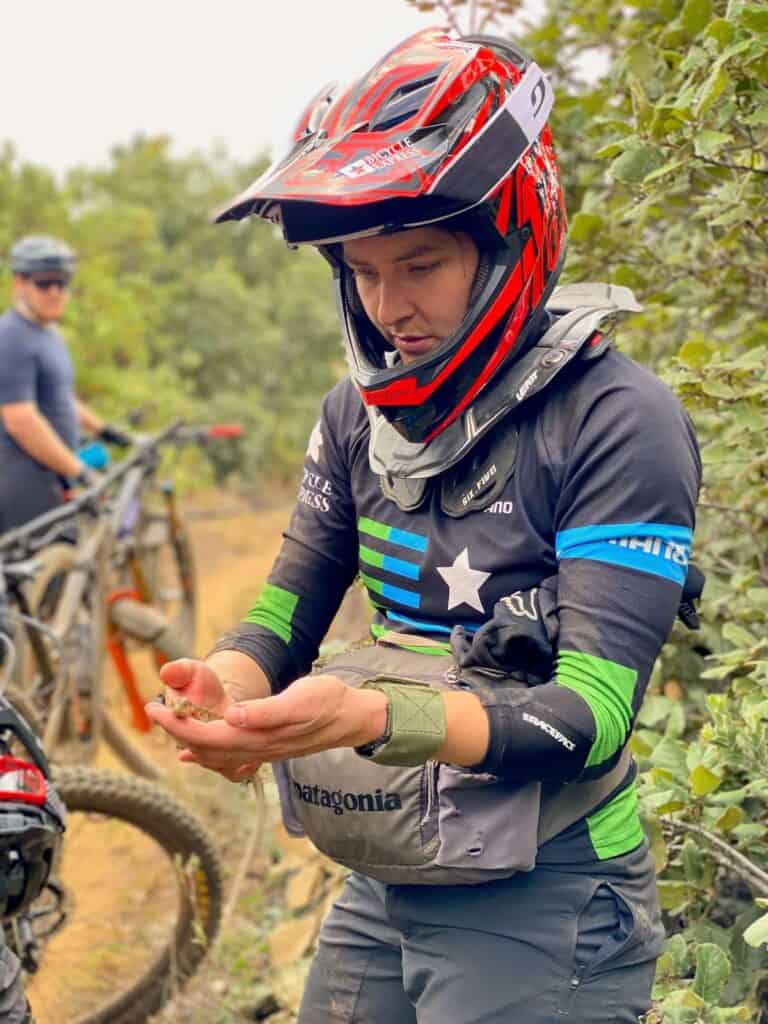
Protecting your Body
Moving down below your head and neck, there are quite a few options for mountain bike protective gear from knee pads and elbow pads to full-on body armor.
Knee pads
I pretty much always wear knee pads when I ride my mountain bike. I’ve had too many close calls (and a few stitches from my brother/ER doctor) not to.
If you ride a lot (or plan on riding a lot) I highly recommend wearing knee pads for every outing. There are a lot of options when it comes to mountain bike knee pads, though. Below are the three most common options
“Soft” knee pads
Soft or sleeve knee pads are typically lightweight pads that are meant to be pedaled in. They provide minimal protection but will keep your knees from getting scraped up in the event of a fall.
>> Where to Shop:
Knee guards
Knee guards typically have hard plastic shells that offer a lot more protection than sleeves against sharp rocks.
However, they aren’t as easy or convenient to pedal in and they can be pretty hot and uncomfortable. I recommend only using these at bike parks or on shuttled rides.
>> Where to Shop:
Knee and shin guards
For full leg protection, you could opt for a knee pad that covers the shins as well.
These are particularly helpful when you’re learning how to ride flat pedals for the first time.
>> Where to Shop:

Elbow Pads
Elbow pads are not a necessary piece of mountain bike protective gear, but they can help prevent your elbows from getting all scraped up – or worse, a broken elbow or arm.
I personally don’t wear elbow pads, but I know plenty of people who do!
>> Where to Shop:
Mountain Bike Gloves
Even just wearing thin mountain bike gloves provides a bit of protection for your hands, but if you want even more padding, some gloves come with hard or soft pads in strategic places like the knuckles in case you accidentally punch a tree.
Two wheeled wanderer pick
HANDUP Most Days Gloves
I love HANDUP gloves. They don’t have any added protection, but they are super durable and tough, so they do provide a strong layer between you and rocks, dirt, or tree bark. If you want added protection, check out the Fox Defend Glove (men’s).
>> Where to Shop:
Padded shorts
Some bike chamois actually come with crash padding built-in. Racers will wear these, but they’re a good option if you want to feel more confident on the trails or you ride in a particularly rough and rugged place.
>> Where to Shop:
Mountain Bike Pants
Mountain bike pants don’t necessarily provide padded protection (although there are definitely a few options for that out there that do), but rather provide an extra layer of durable fabric to protect against scrapes and scratches.
You’ll still need to wear knee pads underneath to protect your legs from harder impacts.
Two wheeled wanderer pick
Troy Lee Designs Lillium
The Troy Lee Designs Lillium Pants are a perfect blend of durability, comfort, and breathability. They don’t have any extra padding or protection, but the will protect your legs from minor scrapes and abrasions. (Men’s here)
>> Where to Shop:
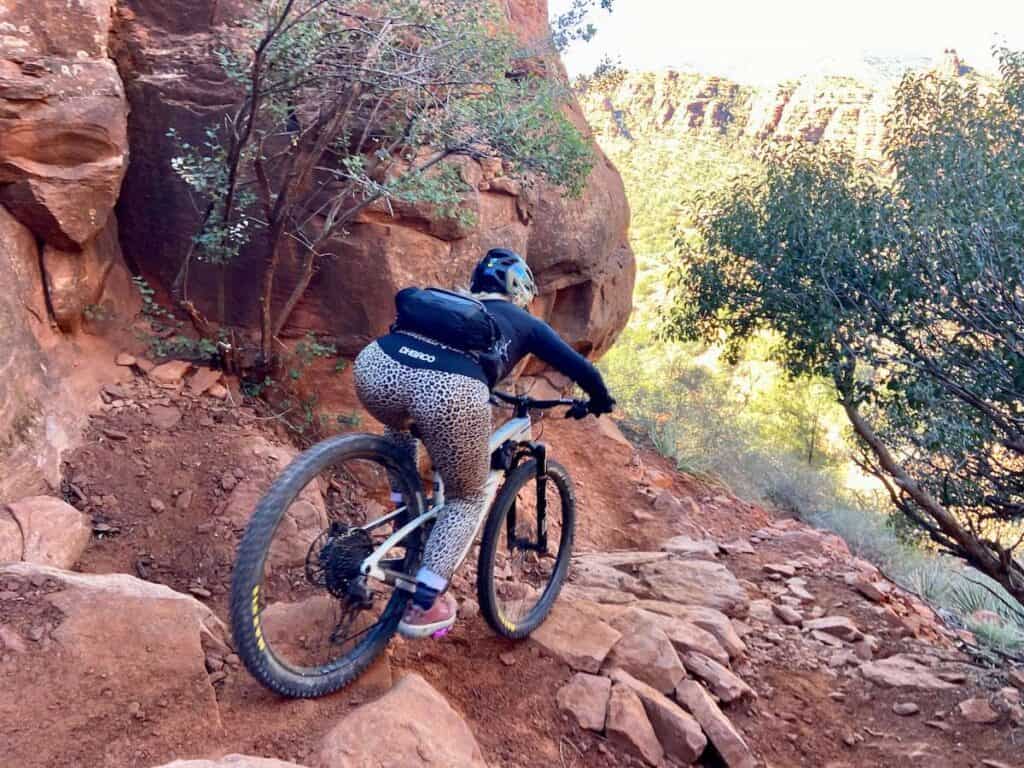
Read next: Looking for more options? Head to my post on the Best Women’s Mountain Biking Pants.
Mountain Bike Body Armor
If you’re really serious about maximizing protection on the trail, you might want to look into mountain bike body armor.
This type of mtb protection covers a varying degree of your torso from soft padded protection to full-on hardshell body armor.
One consideration to think about before opting for torso armor is that it can restrict your body movement on the bike, making it harder to react to what’s coming at you on the trail.
>> Where to Shop:
Final Thoughts
Mountain biking can be a rough sport, especially if your idea of a fun day involves catching air, navigating technical rock gardens, or trying your hand at a local race.
A good helmet equips you with basic mountain bike protection and from there, you can build your ensemble with more padding and protection.
Also, remember that different rides will require different equipment. I don’t wear my full-face helmet for everyday riding, but I definitely bring it to the bike park along with burlier knee pads.
Play around with what works for you and stay safe out there!
RELATED POSTS
Looking for more tips and recommendations for mountain bike gear and apparel? Check out these related blog posts.
What mountain bike protective gear do you wear? What are your favorites? Leave a comment below!

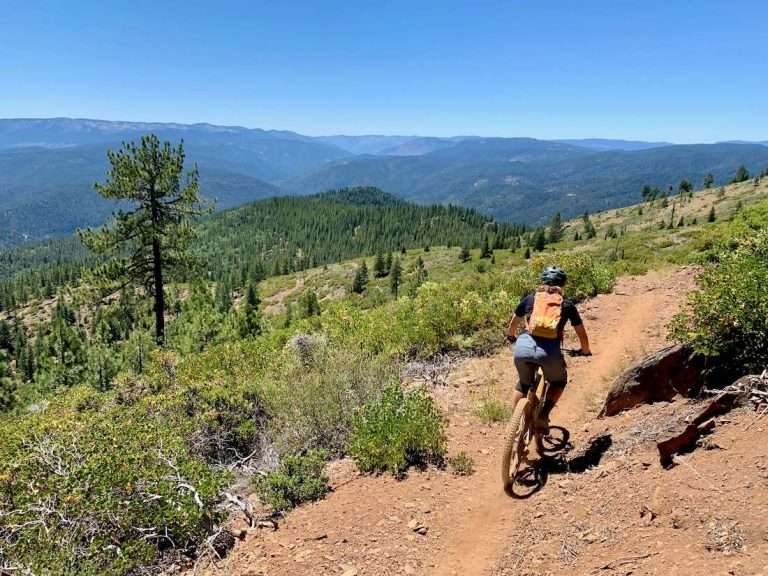
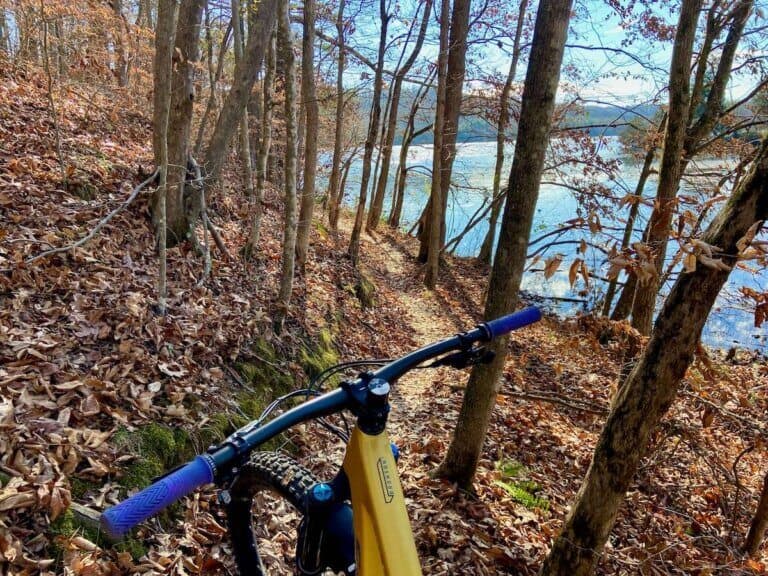
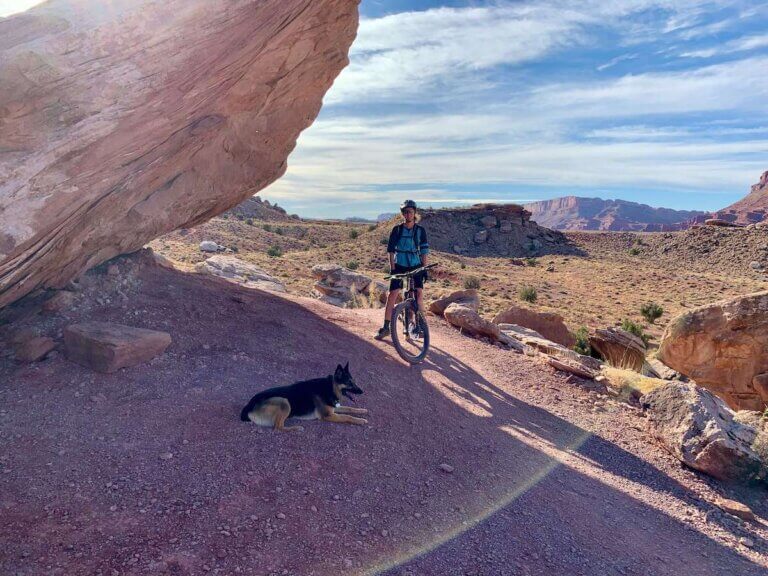
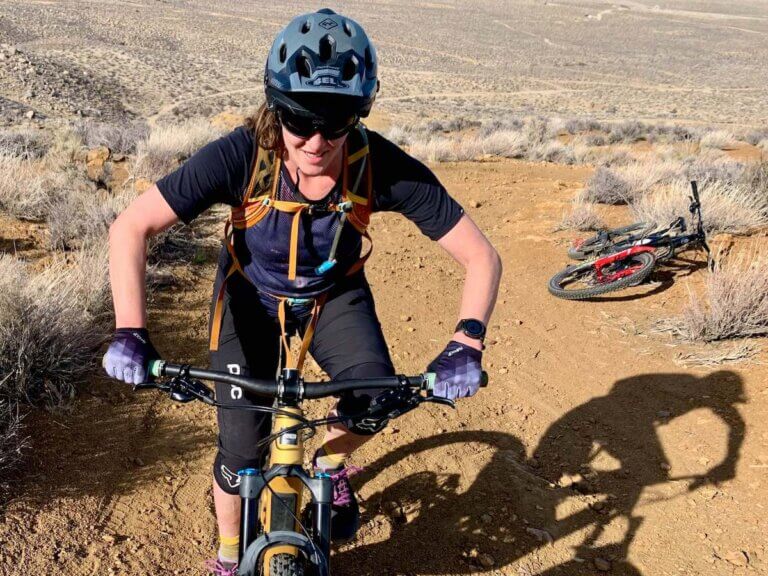
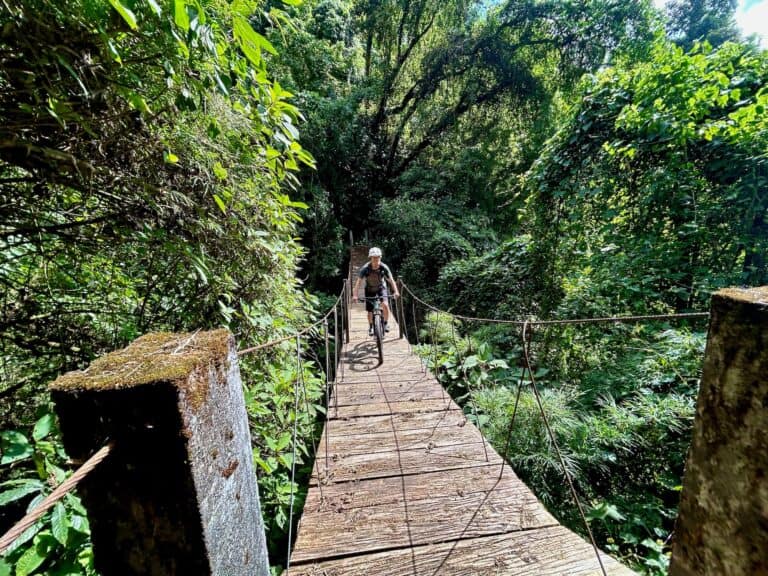
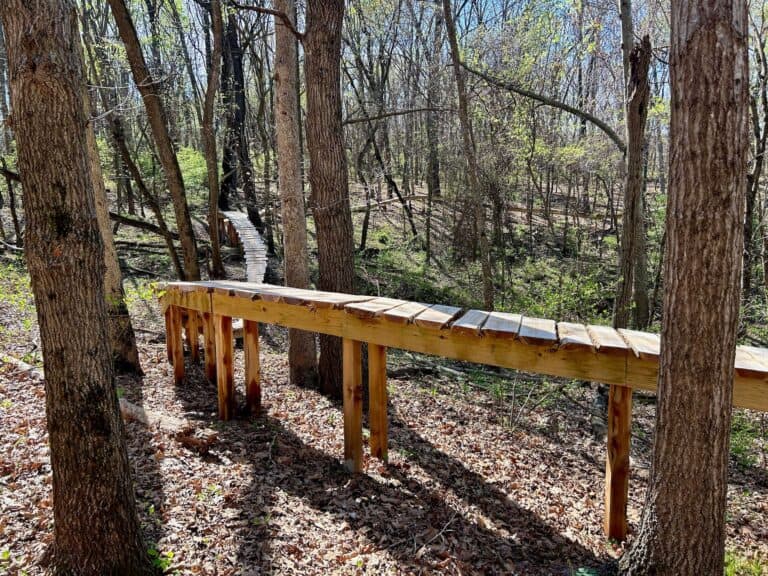
Hi Dale,
I had several crashes and asked Becky for help. She suggested (as detailed above) the Fox Enduro knee pads. They are easy on/off, do the job with adequate ventilation, and offer enough protection for the kind of riding you do. Most importantly for me, they prevent kneecap road rash which can take forever to heal.
Best wishes,
Bill DeForest
I enjoyed reading your informative guide to bicycle safety equipment.
The joy of riding started in at 40 and at 71 years old still enjoy the sport for exercise. A close friend who is an avid rider always told me that I am not a cyclist, I am just a guy who enjoys riding bicycles. I am good with that. I ride mainly bike paths but cannot help but ride on some roadways and try to get in about 20 miles every day. Another friend who was also an avid rider had an accident recently, the accident has benched him from ever riding again. As he was also 71 it started me thinking about getting some safety gear in addition to my helmet. At 6 feet 3 inches and 240 lbs, I am having difficulty finding knee pads, elbow pads and wrist protectors large enough. Any suggestions?
My question to you is am I thinking correctly that this would be a good idea, what protection would you recommend? As long as I can, I want to ride. I think some additional safety equipment is just some insurance to assure that outcome.
Thank you in advance.
Hi Dale, thanks for reading and it sounds like you’re really enjoying your rides! For protection, a good helmet is the most important piece of protective gear. Other gear, like knee pads and elbow pads, will help keep you from getting scratched up in case of an accident, but won’t do much in the event of a big crash or collision.
If you do want to get some extra gear G-Form has sizes up to 2XL and their pads are still pretty easy to pedal in. I hope that helps – stay safe and keep enjoying your rides!